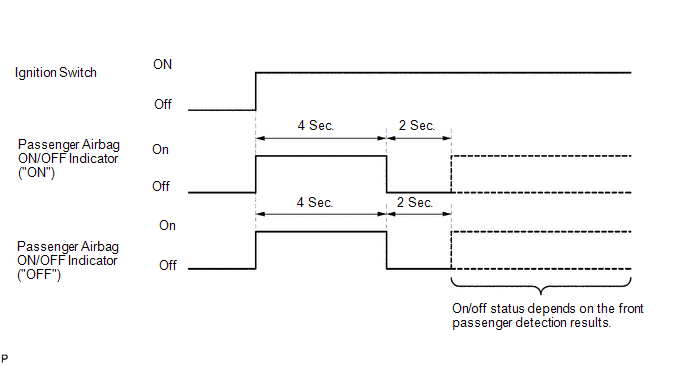Toyota 4Runner: Diagnosis System
DIAGNOSIS SYSTEM
1. SYMPTOM SIMULATION
HINT:
The most difficult case in troubleshooting is when no problem symptoms occur. In such a case, a thorough problem analysis must be carried out. A simulation of the same or similar conditions and environment in which the problem occurred in the customer's vehicle should be carried out. No matter how much skill or experience a technician has, troubleshooting without confirming the problem symptoms will lead to important repairs being overlooked and mistakes or delays.
(a) Vibration method: When vibration seems to be the major cause.
.png)
HINT:
Perform the simulation method only during the primary check period (the period of approximately 6 seconds after the ignition switch is turned to ON).
(1) Slightly vibrate the part of the sensor considered to be the cause of the problem with your fingers and check whether the malfunction occurs.
HINT:
Shaking the relays too strongly may result in open relays.
(2) Slightly shake the connector vertically and horizontally.
(3) Slightly shake the wire harness vertically and horizontally.
The connector joint and fulcrum of the vibration are the major areas to be checked thoroughly.
(b) Simulation method for DTC B1795: Turn the ignition switch from off to ON, wait for 10 seconds, and then turn the ignition switch off again 50 times in a row.
HINT:
DTC B1795 is stored if the occupant classification ECU receives the ignition switch off-ON-off signal pattern 50 times in a row when a malfunction occurs in the power circuit for the occupant classification system.
2. FUNCTION OF PASSENGER AIRBAG ON/OFF INDICATOR
(a) Initial check
(1) Turn the ignition switch to ON.
(2) The passenger airbag ON/OFF indicator ("ON" and "OFF") comes on for approximately 4 seconds, and then goes off for approximately 2 seconds.
(3) Approximately 6 seconds after the ignition switch is turned to ON, the passenger airbag ON/OFF indicator indicates "ON" or "OFF" depending on the conditions listed below.
|
Front Passenger Seat Condition |
ON Indicator |
OFF Indicator |
|---|---|---|
|
Vacant |
Off |
Off |
|
Adult is seated |
On |
Off |
|
Child is seated |
Off |
On |
|
Front passenger occupant classification system failure |
Off |
On |
HINT:
- The passenger airbag ON/OFF indicator comes on based on the timing chart
below in order to check the indicator light circuit.

- When there is a problem in the occupant classification system, both the SRS warning light and passenger airbag ON/OFF indicator ("OFF") come on. In this case, check the DTCs for the airbag system first.
3. CHECK PASSENGER AIRBAG ON/OFF INDICATOR
(a) Turn the ignition switch to ON.
(b) Check that the passenger airbag ON/OFF indicator ("ON" and "OFF") comes on for approximately 4 seconds, and then goes off for approximately 2 seconds.
HINT:
In order to check the operation of the passenger airbag ON/OFF indicator when approximately 6 seconds have elapsed after turning the ignition switch to ON, refer to the table in the previous step.
 Data List / Active Test
Data List / Active Test
DATA LIST / ACTIVE TEST
NOTICE:
In the table below, the values listed under "Normal Condition" are reference
values. Do not depend solely on these reference values when deciding whether ...
 Dtc Check / Clear
Dtc Check / Clear
DTC CHECK / CLEAR
1. CHECK DTC
HINT:
When DTC B1650/32 is stored as a result of troubleshooting for the airbag system,
perform troubleshooting for the occupant classification system.
(a) Connect ...
Other materials about Toyota 4Runner:
Steering Angle Sensor Power Source Voltage Malfunction (C1432)
DESCRIPTION
Steering angle sensor signals are sent to the skid control ECU via the CAN communication
system. When there is a malfunction in the CAN communication system, it is detected
by the steering angle sensor zero point malfunction diagnostic functio ...
Relay
On-vehicle Inspection
ON-VEHICLE INSPECTION
PROCEDURE
1. INSPECT DOME RELAY
(a) Measure the resistance according to the value(s) in the table below.
Standard Resistance:
Tester Connection
Condition
...
0.0082
